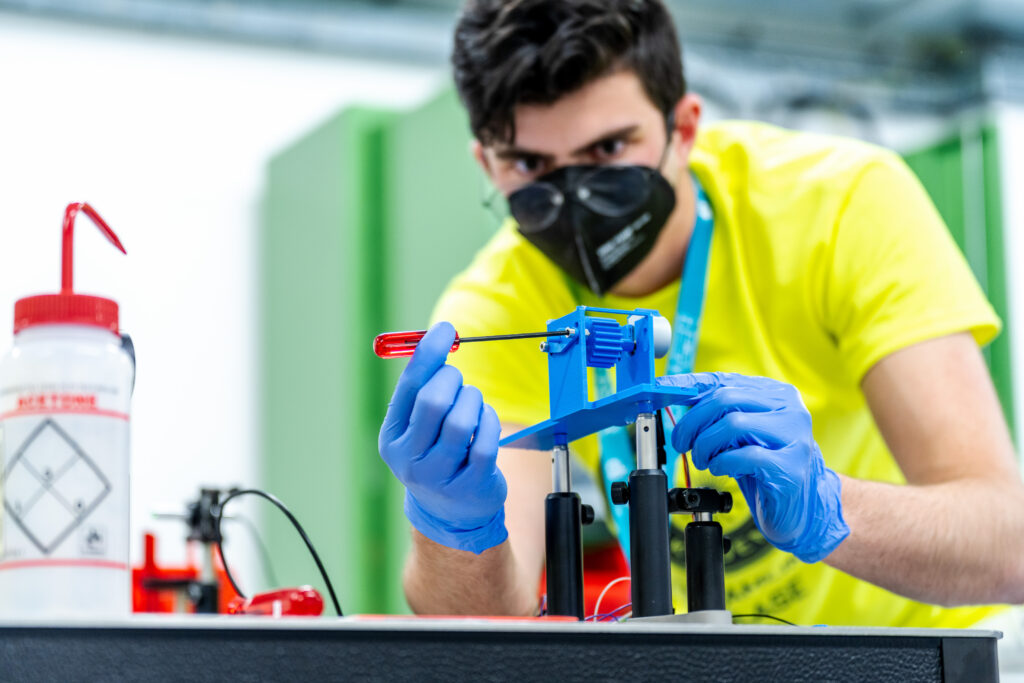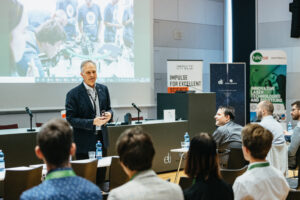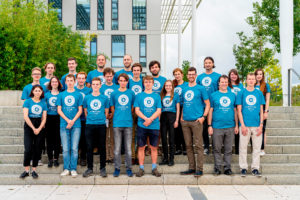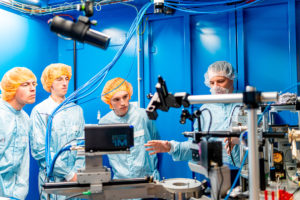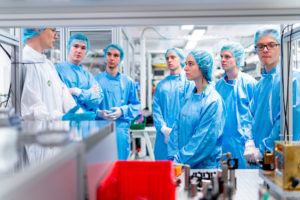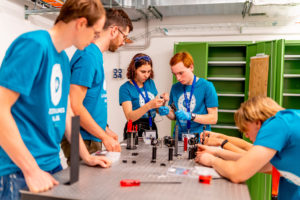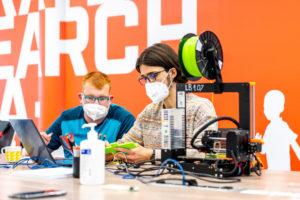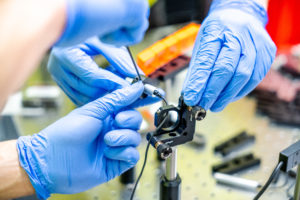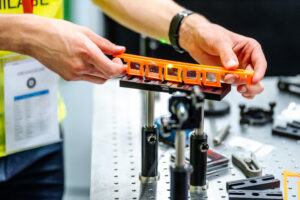Since the beginning of civilization, humans have been able to explore celestial bodies simply through observation. Today, however, with lasers, we can simulate space objects directly in terrestrial laboratories. Powerful lasers can reproduce conditions expected to occur in the cores of giant planets, ignite the beginnings of thermonuclear fusion that powers stars, and, through chemical reactions, prepare structures similar to nebulae. As a result, scientists can practically touch the processes that often occur thousands of light-years away, measure them, and better understand them. “For the HiLASE laser Centre, the use of lasers in space research and applications is one of the strategic priorities, which is why we decided to focus on this topic with high school students this year,” explains Tomáš Mocek, head of the HiLASE Centre, about the motivation for choosing the topic.
For the sixth year in a row, the ELI Beamlines and HiLASE laser centres are offering twelve selected students the opportunity to experience working with real scientific teams in state-of-the-art laboratories during the final round of the Talent Academy project. And right now, high school students can start signing up for the first online round for this year’s Talent Academy. Some of them will meet as finalists in the centres in Dolní Břežany in September. Registration will be open until June 23, 2023 on the www.talentovka.cz website.
“High school students who enjoy natural sciences and are interested in interdisciplinary collaboration do not have to wait until they get to university to do their research. The Talent Academy opens doors into the world of science for them, and they can start their scientific careers even before graduation. We are not just looking for future laser physicists among the students, but also chemists, programmers, designers, and all those who are interested in the world of natural sciences and cutting-edge technologies. After all, science is all about the cooperation between different disciplines,” emphasizes one of the mentors, laser physicist Michal Vyvlečka.
Every year, laser scientists search for an attractive topic in current science and technology, which they focus on with high school teams. This year, the choice fell on the simulation of reflection nebulae, which are objects of deep space, molecular clouds, and particles of only a few nanometers in size. New stars are born from these molecular clouds, or they are remnants of the destruction of old stars. During the Talent Academy, students will create accurate simulations of such nebulae in a chemical laboratory, and they will use lasers to study their properties.
However, the Talent Academy finalists’ journey doesn’t end with the final weekend and research on reflection nebulae. The laser centres continue to deepen their collaboration with the best students, either through summer research internships or gradual involvement in the work of the scientific teams. “The whole project helps us discover new talents, future innovators and scientists. After all, in the five years of the Talent Academy, we have already found several new colleagues among the participants,” says Lenka Černá, Head of the HR team at ELI Beamlines.
One of those finalists who became part of the scientific teams is Beáta Plaskurová. She joined the Talent Academy organizing team and now works in the quantum optics lab at ELI Beamlines. “The Talent Academy convinced me that optics is what I really want to do. It was a great experience that soon brought me other opportunities, whether it was writing a methodology for teaching optics in primary schools, or the current collaboration on my thesis,” adds Beata Plaskurová, a student at the Faculty of Mathematics and Physics at Charles University in Prague.
Are you a high school student? Do you enjoy science and technology, but are bored with microwave experiments at home? Don’t wait until university, apply to the Talent Academy on www.talentovka.cz and come to do real science with us!
Basic information:
Organizers: HiLASE Centre (Institute of Physics of the CAS) and ELI Beamlines Facility (ELI ERIC).
About the Talent Academy: www.talentovka.cz , www.facebook.com/TalentovaAkademie
Photo gallery: bit.ly/TalentovkaMedia
Candidate profile: age 15-19, high school student interested in natural science subjects, especially physics
The Talent Academy project No. 0059/7/NAD/2023 is supported by the Ministry of Education, Youth and Sports within the framework of the „Support of Gifted Primary and Secondary School Students in 2023“ programme.
Talent Academy 2023 schedule:
26 April – 23 June 2023 / Registration
23 June 2023 7 July / Deadline for submitting the project (extended)
20 Aug 2023 / Results evaluation
23-25 September 2023 / Final round at the laser centres in Dolní Břežany
Media contacts:
ELI Beamlines: Hana Strnadová | Hana.Strnadova@eli-beams.eu | 601 560 333
HiLASE Centre: Radka Kozáková | Radka.Kozakova@hilase.cz | 601 560 164
About ELI Beamlines: The ELI Beamlines Facility was part of the FZU until 2022. As of 1 January 2023, according to the strategic plan, it became independent and transferred from the FZU structure to the international research consortium The Extreme Light Infrastructure ERIC (ELI ERIC). FZU and ELI ERIC remain strategic partners. The ELI Beamlines centre has four ultra-intense laser systems that work together and, thanks to their high peak powers, open up completely new types of experiments for scientific teams from all over the world. For example, these lasers allow researchers to study how matter behaves under extreme conditions, to simulate the environment inside large planets right in the laboratory, or to accelerate particles without the need to build huge accelerators.
About the HiLASE Centre: The HiLASE Centre is a scientific research centre of the Institute of Physics of the CAS (FZU), which focuses on experimental development of a new generation of diode-pumped lasers with high energy per pulse as well as high repetition frequency. The Centre also tests the durability of optical materials (LIDT – Laser Induced Damage Threshold) and conducts research on strengthening material through Laser Shock Peening, precision cutting, drilling, welding, micromachining and surface cleaning. Its ambition is to be the first choice R&D partner for companies and research organisations looking for innovative laser technologies and solutions, both on Earth and in space.
About the Institute of Physics of the Czech Academy of Sciences: The Institute of Physics is a public research institute, conducting fundamental and applied research in physics. The present research programme of the Institute comprises six branches of physics: particle physics, physics of condensed matter, solid-state physics, optics, plasma and laser physics. FZU is fully involved in fundamental research at the European and global level. With more than 500 scientists, FZU is the largest institute of the Czech Academy of Sciences (CAS). The institute hosts postdoctoral researchers through a number of mobility programmes such as the Marie Sklodowska Curie Actions.




